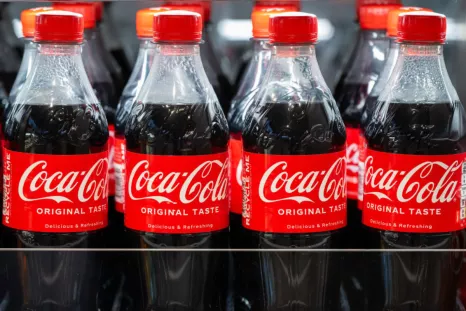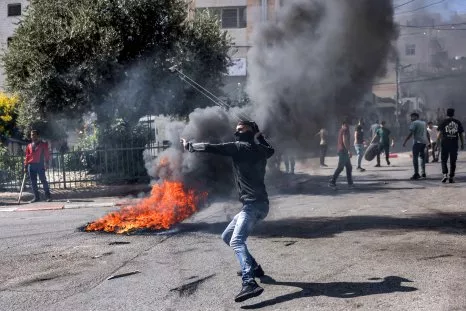Video Shows White Phosphorus' Horrifying Impact on Human Body
White phosphorus munitions—which have purportedly been dropped on Gaza by Israeli forces, who deny the claims—can cause severe burns, lung damage and internal bleeding to those exposed, a video shows.
On Thursday, Human Rights Watch (HRW) said it had verified footage, taken between October 10 and 11, showing multiple instances of white phosphorus being used over Gaza City and in rural locations along the Israel-Lebanon border. HRW added that it "puts civilians at risk of serious and long-term injuries." Newsweek approached HRW via email for further comment on Friday.
Around 1,500 Hamas and Islamic Jihad militants launched the deadliest such Palestinian attack on Israel in history on Saturday. Since then, an intensive campaign of air strikes on targets in Gaza has been conducted by the Israeli Air Force. While it has forewarned civilians in those areas, so far 1,537 have died in Gaza and 6,612 have been people injured, AP reported, citing Gaza Health Ministry figures.
Amnesty International said on Friday morning that it had verified that Israeli military units conducting air strikes on Gaza "are equipped with white phosphorus artillery rounds." The human-rights organization was investigating "what appears to be the use of white phosphorus in Gaza, including in a strike near a hotel on the beach in Gaza City."
The Israel Defense Forces (IDF) denied the claims, describing the accusations to multiple news agencies as unequivocally false, adding: "The IDF has not deployed the use of such munitions."
White phosphorus is primarily used to illuminate areas, mark targets, or obscure military operations by creating a smokescreen, all of which are permissible under international law. It can also be used as an incendiary weapon to target bunkers and buildings, and its use in civilian areas is highly contentious.
Under Protocol III of the U.N. Convention on Conventional Weapons, which Israel has not ratified, airdropped incendiary weapons are prohibited against military targets located among civilians. However, the convention defines incendiary weapons as those with the primary purpose of setting fires and burning people, rather than multi-purpose tools such as white phosphorus that can be used in other applications, such as creating a smokescreen.
A video produced by HRW about incendiary weapons says they are notorious for their horrific human cost by inflicting excruciating burns, respiratory damage and organ failure.
"White phosphorus is unlawfully indiscriminate when airburst in populated urban areas, where it can burn down houses and cause egregious harm to civilians," Lama Fakih, HRW director for the Middle East, said in a statement.
Gaza is one of the most densely populated regions in the world, with an estimated 2.3 million people residing in an area of 141 square miles in total, meaning buildings in its urban areas are tightly grouped together.
White phosphorus can burn at a heat of 1,472 degrees Fahrenheit, and in high concentrations can cause deep burns and tissue necrosis. Once exposed to air, it produces phosphorus pentoxide, which in enclosed spaces can cause respiratory damage, though, in field concentrations, it is usually harmless.
The Centers for Disease Control and Prevention said exposure to the chemical can have delayed symptoms including nausea, vomiting blood, organ damage and cardiovascular collapse in high-enough doses. It says death caused by white phosphorus can occur between four and eight days after exposure.
Israel previously used the incendiary munitions during the 2006 Lebanon War and the 2008-2009 Gaza War. However, in both instances, Israelis said that their use had been in accordance with international law and that the munitions were not used to target civilians.
Disclaimer: The copyright of this article belongs to the original author. Reposting this article is solely for the purpose of information dissemination and does not constitute any investment advice. If there is any infringement, please contact us immediately. We will make corrections or deletions as necessary. Thank you.





